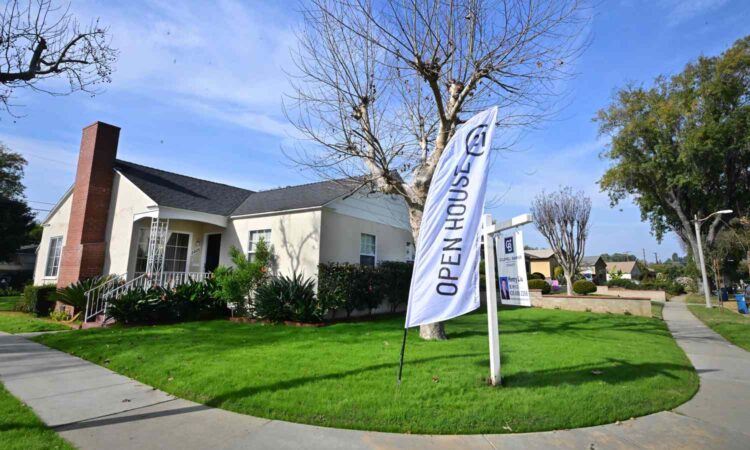
Key Takeaways
- Home prices have surged over the past four years, and mortgage rate increases since 2022 have made purchase costs even more prohibitive, especially for potential first-time buyers.
- For houses to be as affordable as they were before the pandemic, a highly improbable combination of steep declines in home prices and mortgage rates, as well as a surge in median household incomes, would be needed.
- Additional supply of new homes would also help, as the U.S. has been building far fewer homes than are needed ever since the Great Recession.
The “American dream” of home ownership is in serious trouble, and it would take a dramatic shift in the marketplace to bring it back within reach for most families.
To be specific: To make houses as affordable as they were on typical incomes back in February 2020, home prices would have to fall 40%, the average mortgage rate would have to plummet to an unheard-of 2.45% from its December 2023 average of 6.80%, or median household income would have to skyrocket to $129,096 from its December level of $77,730. A combination of those three factors would also do the trick, according to calculations by Investopedia.
Those figures highlight how far home affordability has soared out of reach for typical families since the pandemic hit. First-time buyers have been hit by a double-whammy of surging prices since 2020 and, since 2022, mortgage rates at or near their highest in decades, both of which have pushed monthly mortgage payments on typically priced homes well out of reach for all but high-earning buyers.
An index of home affordability created by the Federal Reserve Bank of Atlanta was, as of December, near its lowest point ever in data going back to 2006 at 72.8, with 100 being the level at which homes are affordable at typical incomes. By comparison, the index was at 106.7 in February 2020 before the pandemic touched off wild swings in prices, incomes, and mortgage rates that are the most influential factors in the index.
As of December 2023, the monthly mortgage payment, including taxes and insurance, on a median-priced home was $2,670, consuming 41.2% of a typical household’s monthly income according to the tracker. That means at today’s prices, you’d need a six-figure income for your mortgage to take up less than 30% of your income, the standard threshold for an affordable payment for housing.
Situation Unlikely to Improve Anytime Soon
It’s a situation that’s unlikely to get better anytime soon, housing experts say. While mortgage rates are expected to fall over the coming year as the Federal Reserve prepares to ease its campaign of anti-inflation interest rate hikes and cut the fed funds rate, lower mortgage rates could spur more demand for housing, and in turn raise prices even more.
The only real solution is to build more houses, said Lawrence Yun, chief economist at the National Association of Realtors. Many of the housing market’s woes boil down to the simple fact that the U.S. has been building fewer homes than are needed ever since the Great Recession. The U.S. had 5.5 million fewer homes than needed as of 2021, according to a report by the association.
“If supply steadily appears, then home price growth can be muted,” Yun wrote in an email. “The best scenario is home price growth being less than income growth. Affordability would finally turn for the better after three years of sharp declines.”
That’s exactly the goal of a set of policy proposals released by the White House Thursday, aimed at increasing the supply of affordable housing. If enacted, the measures would, among other things, use federal grants to encourage local governments to change zoning laws that restrict the construction of new housing.
How We Got Those Numbers
Our foray into this question was inspired by Lance Lambert, editor in chief of real estate website Residential Club, who tweeted an analysis of what it would take to return to pre-pandemic affordability globally.
Investopedia’s calculations assume monthly mortgage payments based on a 20% down payment, and for the sake of simplification, only consider the principal and interest payment for a mortgage, leaving out other costs like insurance and property taxes. The median-priced home cost $264,833 in February 2020, and had risen to $359,000 as of December 2023, according to a three-month moving average of median home price from CoreLogic via the Atlanta Fed.
Combined with the average rate for a 30-year fixed mortgage—6.80% in December 2023, up from 3.50% in February 2020 according to Freddie Mac via the Atlanta Fed—that makes for a monthly principal and interest payment of $1,872 in December 2023, up from $956 just before the pandemic hit.
And while incomes have risen significantly, the average hasn’t nearly kept up with home prices. The median income in December 2023 was $77,730, up from $65,868 in February 2020 according to Census Bureau data via the Atlanta Fed.
